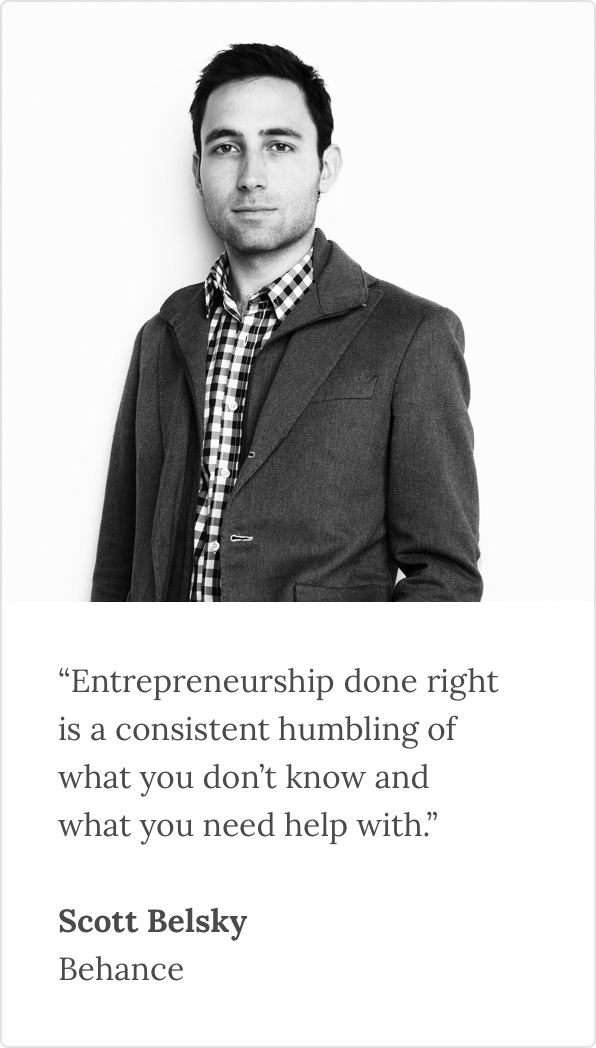Scott, do you consider yourself a designer?
SCOTT BELSKY: I don’t have the formal training that Matias has. Most of what I now know about design I’ve learned from him and years in the industry. The two of us lead the product concepting team and every decision goes through two processes, on his side and on my side. I would say that we’ve led this business through design on both of our sides, through both product and business.
MATIAS COREA: I think the thing is that when I met Scott, I was just a designer.
What do you mean by, “just a designer?”
MC: I turned Scott into a designer, he turned me into an entrepreneur. I used to be the most egocentric designer. I was all about my design and not about how does this affect the business, how does this affect our runway?
When you say “my design” do you mean “my visual design?”
MC: MY design. The fact that it was mine. That came from me being a classically trained designer—typography, branding, editorial. There’s a lot of ego. When you’re younger also—we started when we were 26—it’s about “my design” and defending that. With maturity and working with a team that’s as smart or smarter than you, it makes you realize that if you pool your forces together you get a better product. You’ll be personally more successful at all levels if you actually use those forces to get to a better place.
When we started, we didn’t know the dynamics of working together because we come from very different backgrounds. I’m from Spain. I have a totally different upbringing than Scott. I’m not from New York.
Was that good or bad?
MC: I don’t know. I think it’s good.
SB: I think it’s good.
MC: We’re very passionate about what we do. Individually, we care a lot about what we do, and then together we care a lot about Behance. We fought a lot in the beginning because we cared so deeply. But because we wanted what was best for Behance, at the end of the day we produced very powerful products. And the solution was always given back to us by the brand, the company, or the product itself. Sometimes we had questions and they got answered by what we had created.
SB: Which is a huge difference from when you outsource design or just hire a designer. Or when a designer founder hires a business person to do the business stuff. If we had outsourced those parts, Behance would never have been able to answer our own questions. In the beginning, we argued about the product’s direction and what we were going to do and who we were going to hire. From the very beginning, this was a design-centric business. He and I have a hand in everything.
